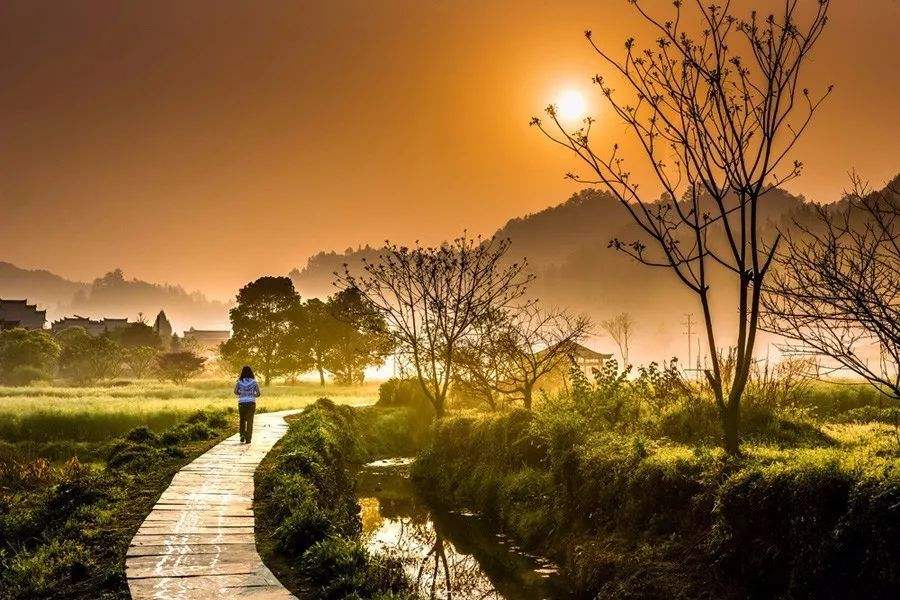Chinese Name: 黟县 Pronunciation: yī xiàn
County Area: 857 square kilometers
Building Time: In the Qin Dynasty (211 B.C.)
Building Function: Residential area
Address: Yi County, Huangshan Prefecture, Anhui Province, Eastern China
Popular Activities: Sightseeing, photography, sketching, walking in the countryside and shopping
| Scenic Area | Fare |
| Hongcun Village | 104 yuan |
| Xidi Village | 104 yuan |
| Nanping Village | 43 yuan |
| Tachuan Village | 35 yuan |
Visitors could enter Hongcun Village and Xidi Village free of charge for the second time within three days from the first admission, but have to register at the ticket barrier before leaving the scenic area.
| Destinations | Opening Hours |
| Hongcun Village | All Day |
| Xidi Village | All Day 06:00-21:00 (Ticket Office) |
| Nanping Village | All Day |
| Tachuan Village | 7:30-17:00 |
| Place | Time |
| Hongcun Village | half-day |
| Xidi Village | 4 hours |
| Nanping Village | 2 hours |
| Tachuan Village | 2 hours |
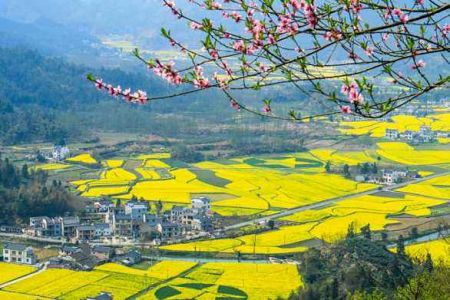
Yi County, a county under the jurisdiction of Huangshan City, is considered one of the birthplaces of Huizhou culture. Yi County is also known as one of the core areas of the southern Anhui International Tourism Culture Demonstration Zone. It is also announced as a World Heritage Site by virtue of its long history and splendid cultures.
Within its territory, 1,590 ancient buildings of the Ming and Qing Dynasties have been preserved intact, and there are two World Cultural Heritage Sites, namely Hongcun Village and Xidi Village.
Owning 6 national famous historical and cultural villages, 44 traditional Chinese villages, 3 national cultural relic protection units and 88 provincial ones, Yi County is also called “The Museum of Ancient Dwelling of the Ming and Qing Dynasties” in China and “The Epitome of Traditional Chinese Culture”.
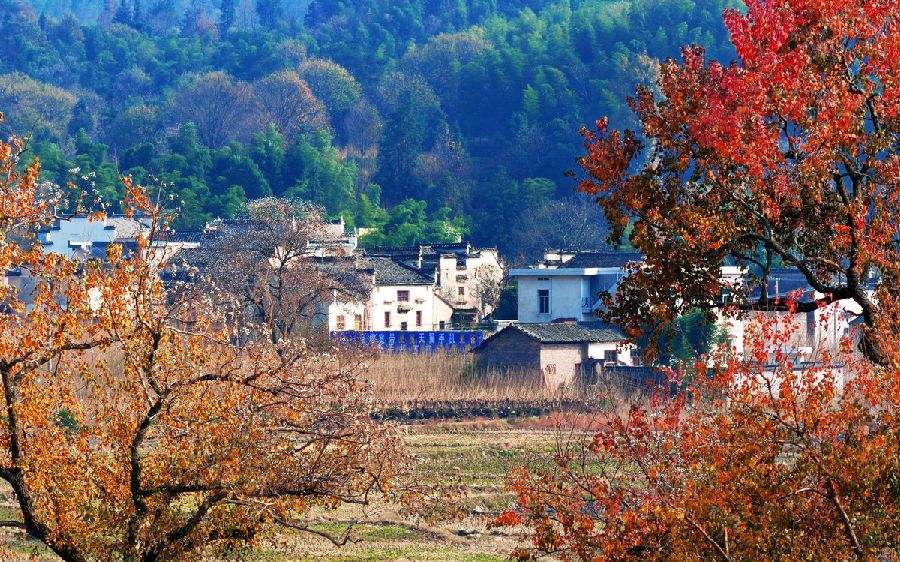
The history of Yi County dates back to the Qin Dynasty. Qin Shi Huang, the first emperor in Chinese history, unified China in 211 B.C. To prevent a recurrence of the political chaos of the Warring States Period, he introduced the system of prefectures and counties and set up She County and Yi County, which was called You County at that time.
In the middle of the Ming Dynasty, Huizhou merchants rose to become one of the biggest gangs of merchants in the middle and late stages of China’s feudal society. A great number of mansions, ancestral halls, memorial archways and gardens were built by Huizhou merchants to honor their ancestors, laying a solid foundation for the development of tourism in Yi County.
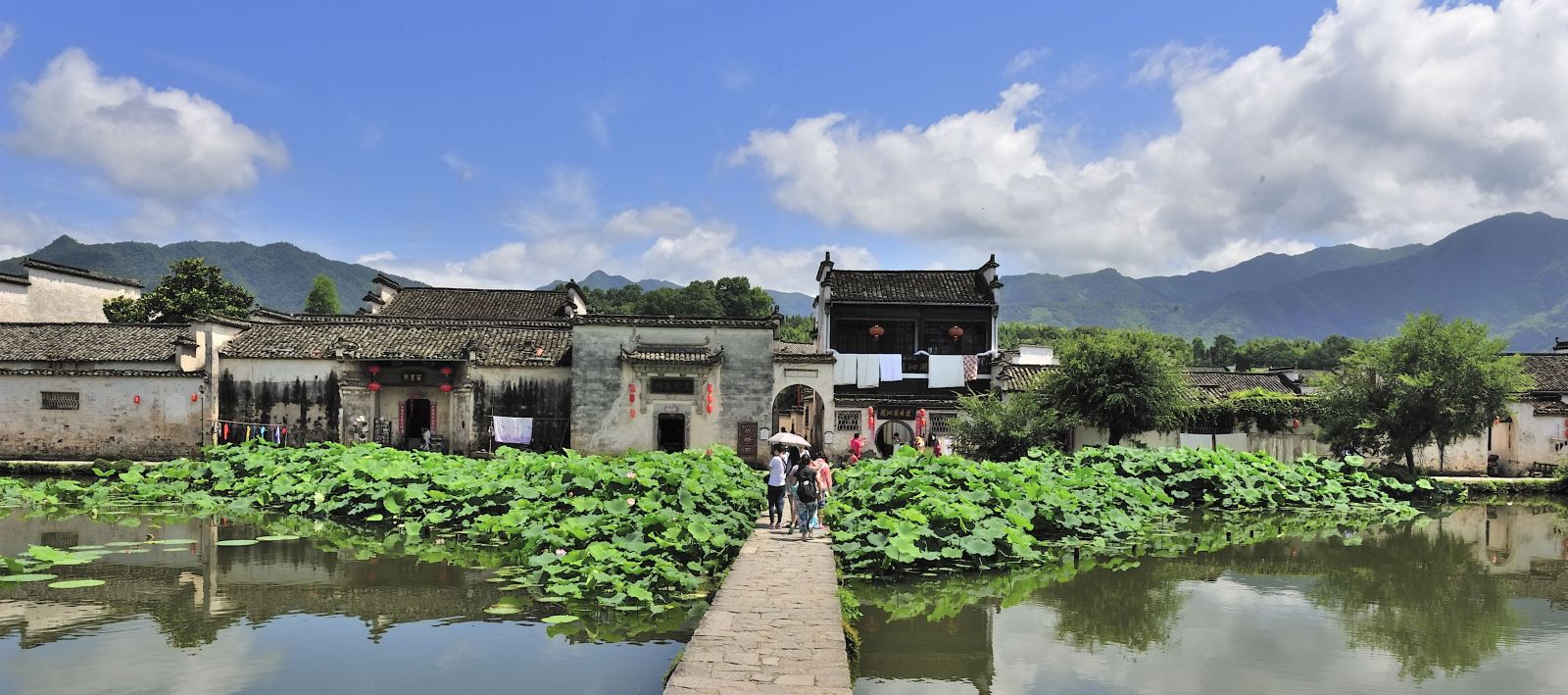
Located in the northeast of Yi County, Hongcun Village is a peculiar bull-shaped ancient village. The history of Hongcun Village could date back to the first year of Shaoxing in the Southern Song Dynasty. At that time, because of the fire disaster, the Wang family moved to Leigang Village (now the center of Hongcun Village) and built houses here.
More than 140 ancient dwellings in the Ming and Qing Dynasties are well preserved in the village. With reasonable layouts and elegant architectural style, the entire village was built in harmony with nature, which is considered as one of the outstanding representatives of traditional Chinese dwellings.
The architecture in Hongcun Village is characterized by the balance between sparse and dense and the contrast between coarse style and the fine one. Besides, the art of Three Carvings is also one of the most commonly used techniques in Hui architecture. Some well-known scenic spots in Hongcun Village include Chengzhi Hall, Jingxiu Hall, Wuben Hall, South Lake Academy, Wang Daxie’s Former Residence, Moon Pond, etc.
In Hongcun Village, human landscapes are in harmony with natural landscapes. Mountains and houses are reflected in the lake, making Hongcun Village a matchless beautiful picture. Hongcun Village is a must-visit place to learn about the rise and fall of Huizhou merchants over the centuries. In 2000, it was listed in the World Cultural Heritage List. And it was announced as a national 5A-level scenic area in 2011.
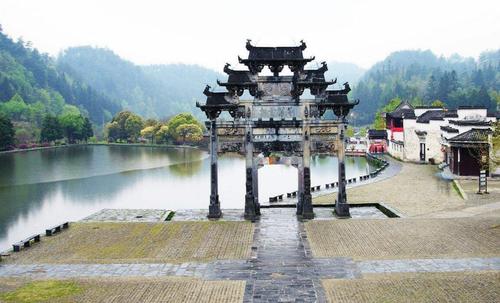
Located in the east of Yi County, Xidi Village has a history of more than a thousand years, which could date back to the reign of Emperor Renzong in the Northern Song Dynasty. The village not only manifests the exquisite architectural art of “Three Carvings”, but also shows the diverse cultures of ancient Huizhou.
Now, there are more than 300 ancient dwellings of the Ming and Qing Dynasties in Xidi Village, among which 124 are well-preserved. Xidi Village is also famous for the superb and brilliant techniques of wood carving, brick carving, and stone carving.
There are some distinctive dwellings in Xidi Village, such as Dafu Grand House, Yifu Hall, Eastern and Western Gardens, Ruiyu Courtyard, and so on. Hu Wenguang’s Memorial Archway, also known as Xidi Archway, is the representative work of Hui style stone carving in the Ming Dynasty. It is also considered as the symbol of Xidi Village.
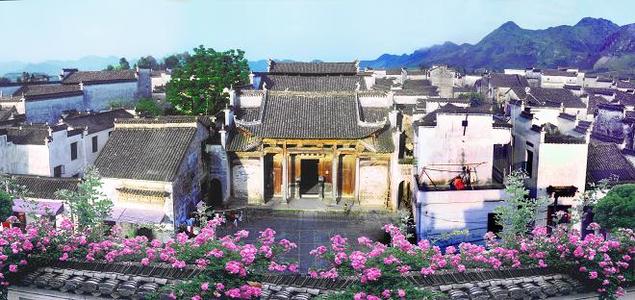
With a history of more than one thousand years, Nanping Village is a major national cultural relic protection unit. It was named after Mount Nanping in the south of the village. Nanping Village was built during the Tang and Song Dynasties. And it gradually expanded by the end of the Yuan Dynasty, when the Ye Family moved here from White Horse Mountain in Qimen County. During the Ming and Qing Dynasties, the rise of Huizhou merchants promoted the development of Nanping village. And then, an ancient Huizhou village was formed. The village was mainly dominated by three families: the Ye, Cheng, and Li Family.
Ancestral Halls are by no means the most distinctive architectures in Nanping Village. Eight ancestral halls representing clan forces were built along a 200-meter-long central axis from the beginning to the end of the village, which reflects a complete ancestral hall system. Therefore, Nanping Village is also known as the “Museum of Patriarchal System in Chinese Feudal Society”.
Nanping is also a natural film and television base. Two famous Chinese movies Crouching Tiger, Hidden Dragon, and Ju Dou by director Zhang Yimou were filmed here, attracting tourists from both at home and abroad to pay a visit to this picturesque village. There are 72 well-preserved ancient alleys and 36 wells in the village, making Nanping a maze-like and more mysterious village.
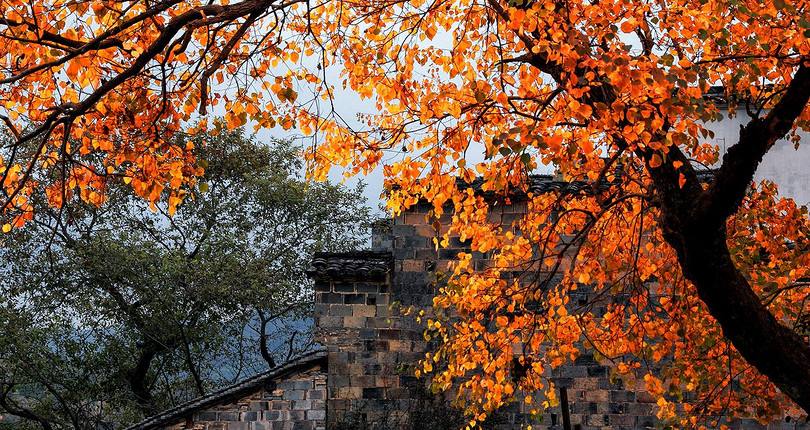
Tachuan Village is under the jurisdiction of Hongcun Town, Yi County. Located on the way from Hongcun Village to Mukeng Bamboo Forest, Tachuan is a mountain village with unique charm among the many beautiful villages in Yi County.
The autumn scenery in Tachuan Village is considered as one of the four most wonderful autumn landscapes in China. Every autumn, the leaves of the Chinese tallow trees turn from green to yellow and then become red, forming a colorful picture that attracts numerous painters and photographers from all over the world.
a. Tachuan Village – Hongcun Village
b. Xidi Village – Nanping Village
Yi County is about 50 kilometers away from the downtown of Huangshan City (Tunxi District) and 37 kilometers from Huangshan Scenic Area (Tangkou Town).
There are regular buses riding from Mount Huangshan Scenic Area and Huangshan Tourist Bus Station (near Huangshan Railway Station) to Yi County every 20 minutes.
The fare is 12.5 yuan and it takes about one hour to get to Yi County.
There are also regular buses riding from Yi County Bus Station to some major scenic areas in Yi County, such as Hongcun Village, Xidi Village, Nanping Village and so on, and the fare is about 2 yuan.
